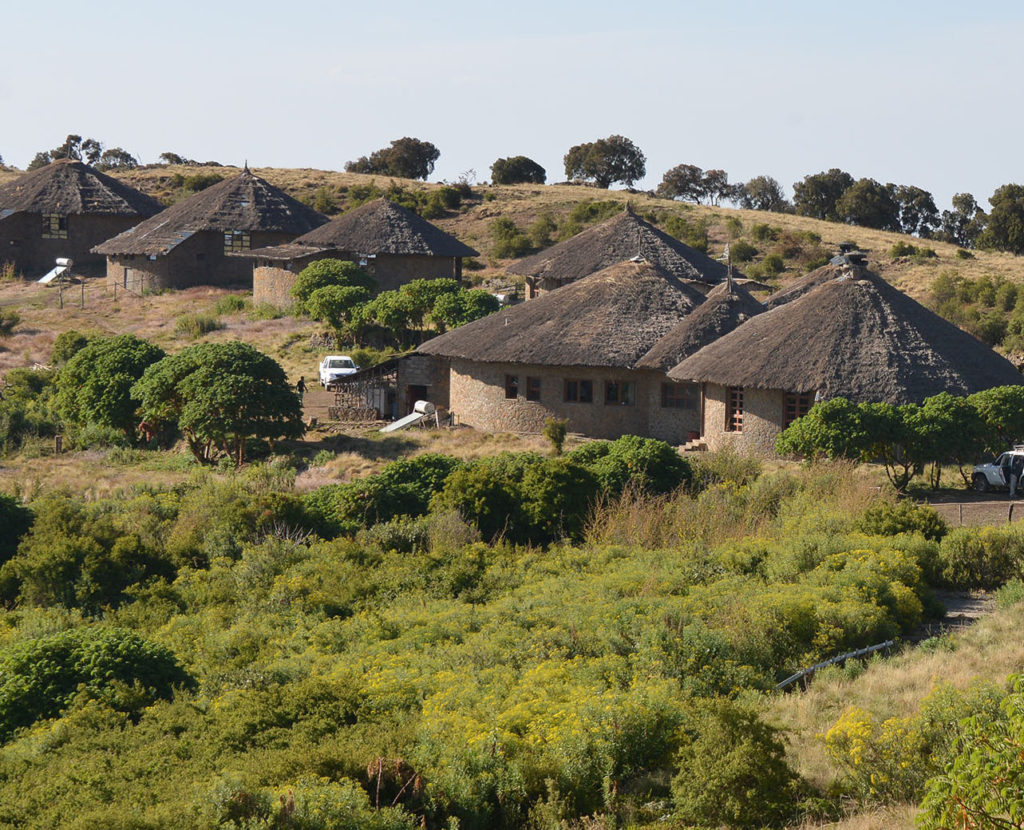The Simien Lodge, in the Simien Mountains National Park, in Ethiopia’s Amhara Regional State on Sunday (October 30) ranked first in Community Development Projects in the 2016 Skål International Sustainable Tourism Award in the category of Rural Accommodation. The award at the Skål World Congress, taking place in Monaco, recognized the Simien Lodge for its commitment to sustainability and innovative projects that address the needs of the community surrounding the lodge. The projects commended by the Skål World Congress included: educational developments, water safety, sustainable tourism initiatives, medical aid and provision of alternative livelihoods. Other projects acknowledged and praised by the Congress were: the donation of 1000 energy-efficient stoves for cooking and heating; the delivery of over 800 school benches to local schools, and more recently the completion of eight new classrooms in three primary schools in the areas around the lodge as well as the restoration of the ancient Saddique Amba Monastery.
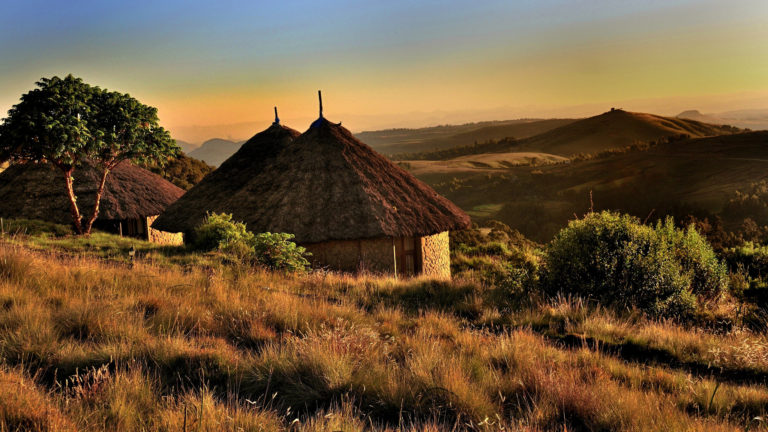
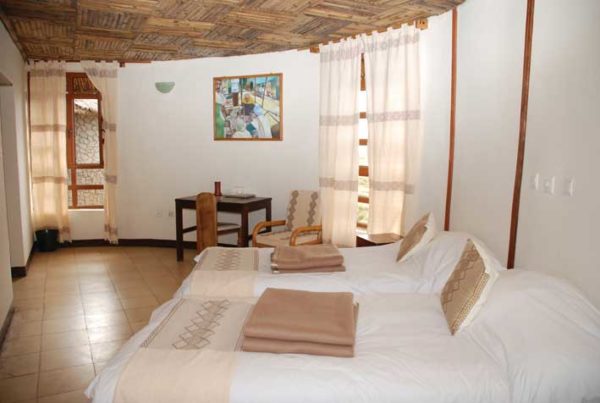
Skål is the oldest tourism association in the world and is represented through clubs in 83 countries. The first club was formed in Paris in December 1932. Skål professionals meet regularly and share experiences to further the principal of sustainable and equitable tourism. The International Awards are given annually to those companies, who in the opinion of a panel of judges, are considered to have provided the best sustainable tourism projects in the year. This year, some 450 delegates drawn from 49 countries met at the International Congress in Monaco, between the 29th October and 2nd November 2016. The award of the first prize underlines the international standard reached by the Simien Lodge.
The Simien Mountains National Park, a UNESCO World Heritage Site, with its undulating plateau and deep valleys, is often dubbed the Grand Canyon of Africa. The Park, in northern Ethiopia, features remarkable vistas and landscapes in which erosion over millions of years has created jagged mountain peaks, valleys and sharp precipices dropping some 1,500 meters or more. The Simien Mountains make up one of the most beautiful stretches of unspoilt mountain wilderness surviving in the world today. The park includes some of Ethiopia’s tallest peaks, including Ras Dashen, which at 4, 543 meters is the highest mountain in Ethiopia.
Wildlife is equally rich, with the Simien range providing the last remaining habitat in the world for the rare Walia Ibex, a type of large wild goat weighing up to 120 kilograms, with long, curved densely-ridged horns. Rarely found at altitudes below 2, 400 meters, these lovely, shy creatures are hard to approach. Ecology has adapted them to live on nearly vertical cliff faces, where they can often be seen in the morning or evening, browsing on narrow, grassy ledges. The Gelada baboon, which like the Walia is another of Ethiopia’s endemic mammals, is also found in the Simien. Nicknamed the ‘lion monkey’ because of its characteristic mane of fine auburn hair, the Gelada is in fact a polite and cautious creature quite unlike the more common baboons found elsewhere in Africa. The heart-shaped patch of bare, reddish skin seen on the chests of both males and female has given rise to another nickname for this species, the ‘bleeding-heart baboon’. A third representative of Ethiopia’s endemic mammals, the Simien red fox, or Abyssinian wolf, can also be seen in the national park. In fact, neither a wolf nor a fox, it is a member of the dog family, but is the only example of its genus. The unique character of Simien wildlife is also mirrored in the many unusual kinds of vegetation to be found in the park, making it a botanical wonderland.
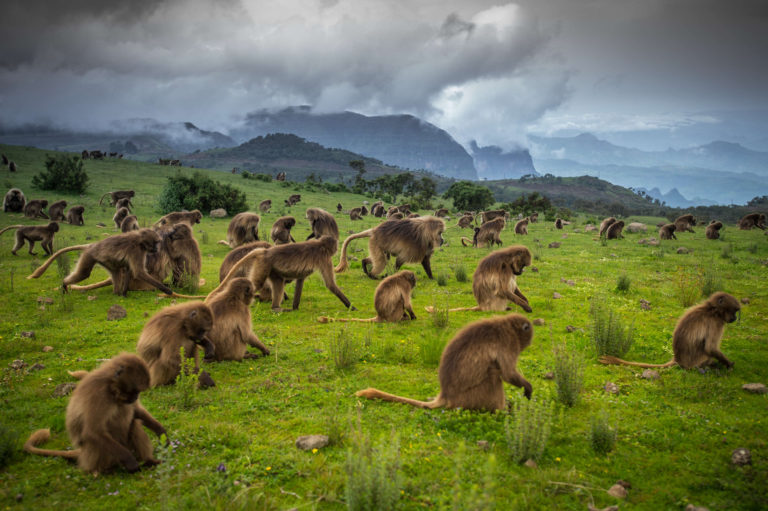
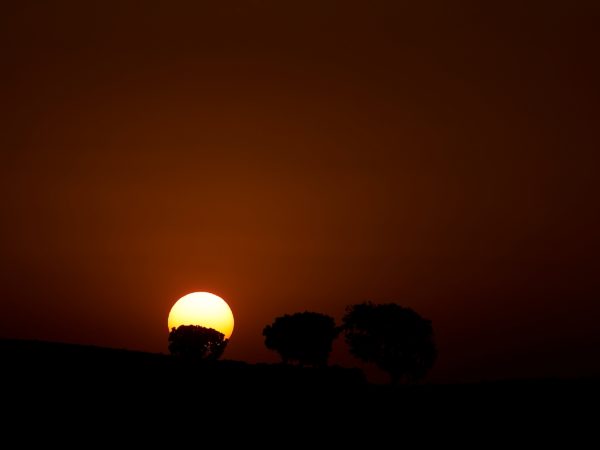

Ethiopia is, indeed, an encyclopedia of geology and geography open for all to read under the intense blue of the African sky. More than this, it is a living book in which the whole story of humankind from its first beginnings millions of years ago, through all the stages of evolution and development, can be viewed with awe and wonder. The traveler in Ethiopia voyages in time as well as in space, for here the drama and beauty of the present are illuminated in countless ways by the grandeur and majesty of the past and in a nation that is building itself anew, with glimpses and intimations of a noble future. Upon visiting Ethiopia and looking at such wonders, Rosita Forbes, a popular English travel writer and explorer once said, “When the old gods reigned in Ethiopia, they must have played chess with these stupendous crags, for we saw bishops’ miters cut in lapis lazuli, castles with the ruby of approaching sunset on their turrets, an emerald knight where the forest crept up onto the rock, and, far away, a king crowned with sapphires and guarded by a row of pawns.”
